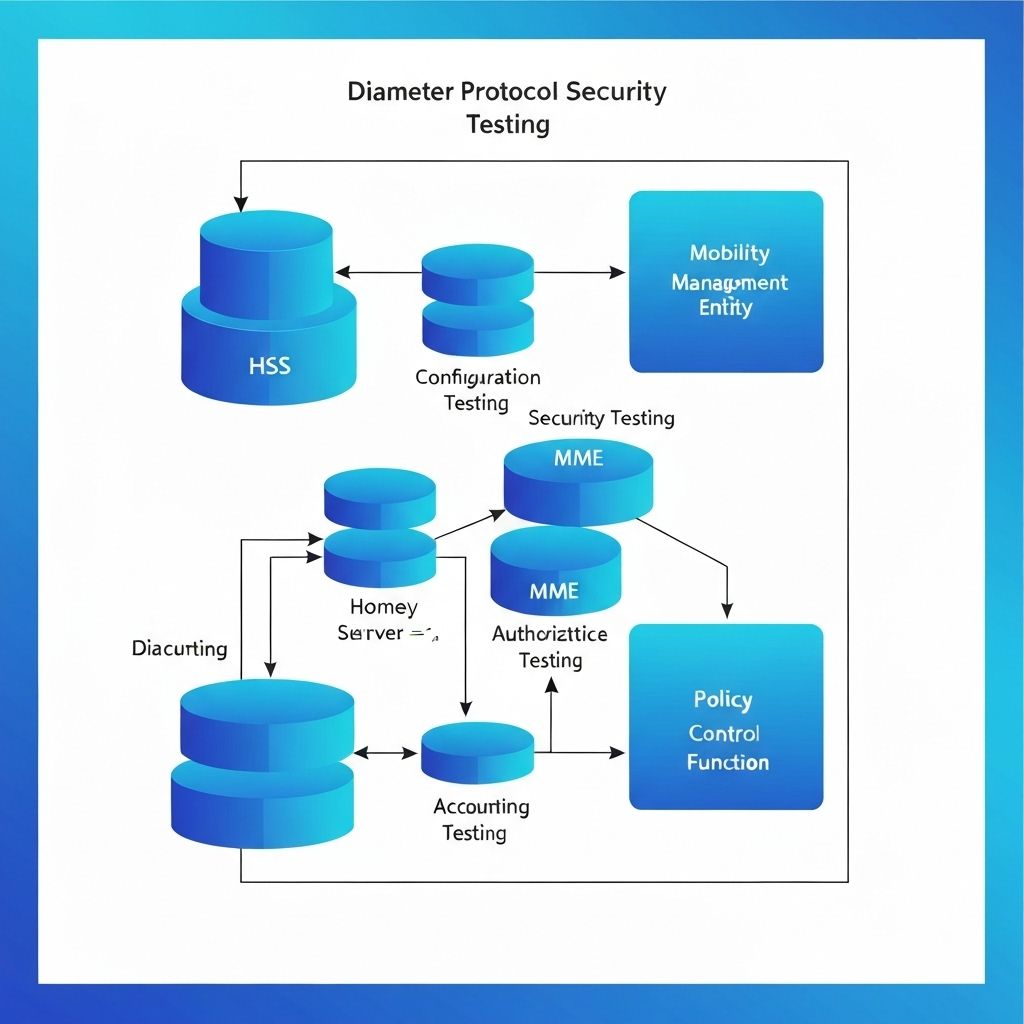
Diameter Security Testing Methodology
A structured approach to identifying and exploiting vulnerabilities in Diameter-based 4G/5G networks
Methodology Overview
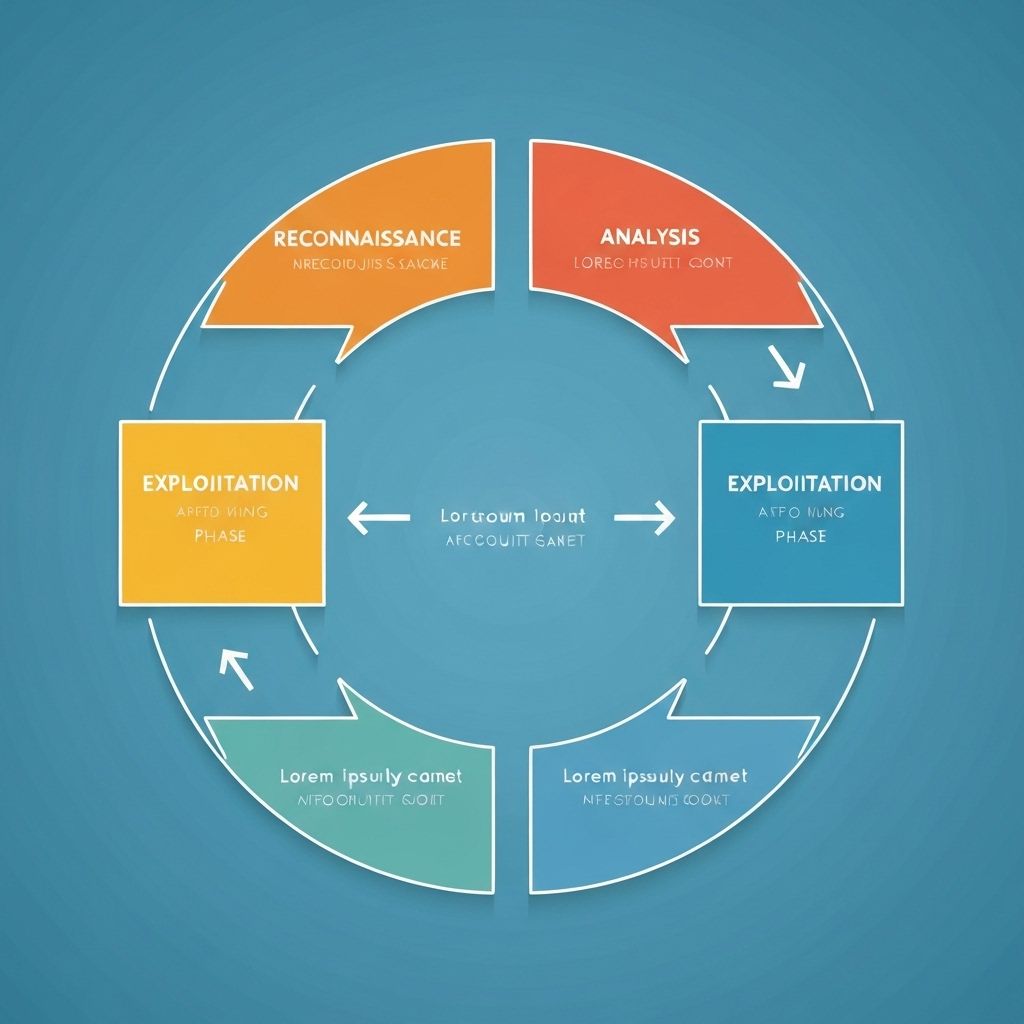
Comprehensive view of the Diameter security testing methodology phases
The methodology for testing Diameter protocol security focuses on identifying and exploiting vulnerabilities in the AAA (Authentication, Authorization, and Accounting) framework used in 4G and 5G networks.
Diameter is the authentication, authorization, and accounting (AAA) protocol used in 4G LTE and 5G networks. It replaced the older RADIUS protocol and is critical for subscriber authentication, policy control, charging, and various other network functions. Understanding Diameter security is essential for protecting modern mobile networks.
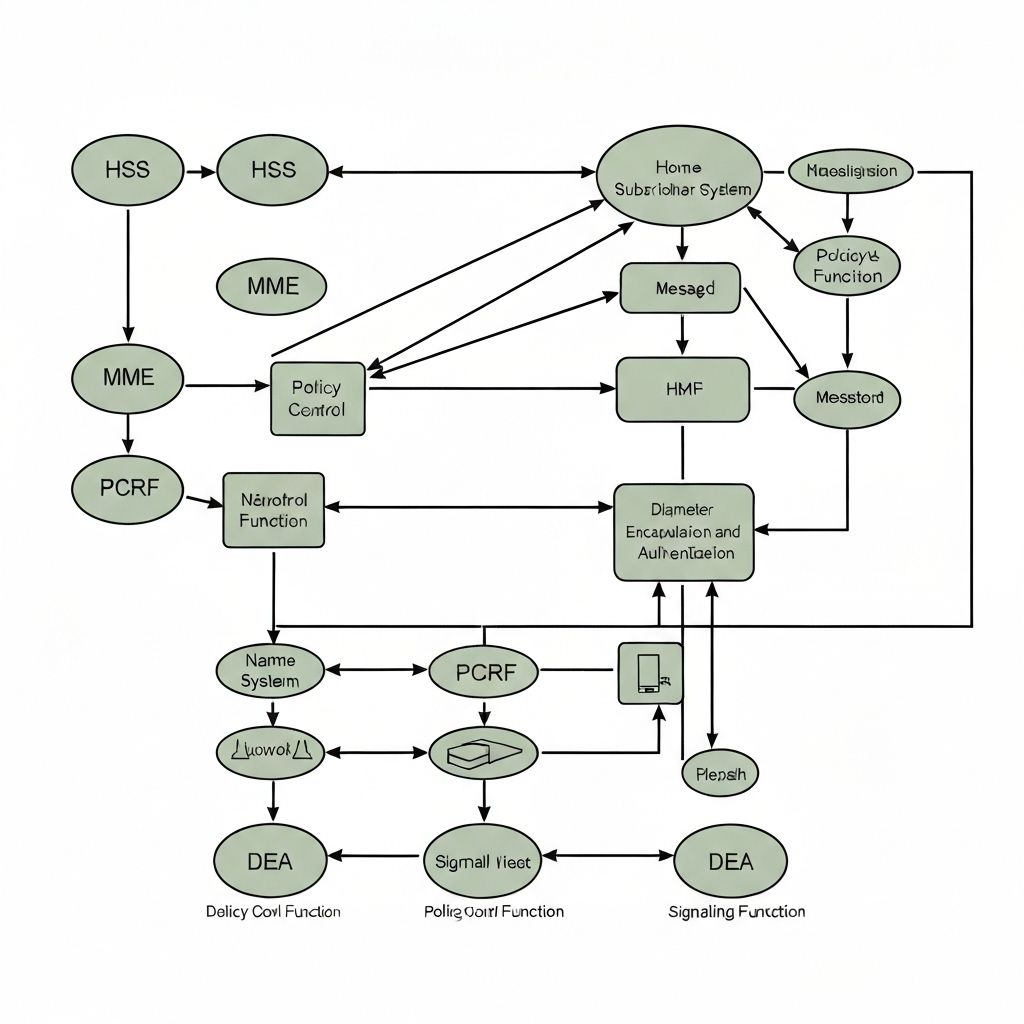
Typical Diameter network topology showing key components and interconnections
Important Considerations
- Authorization: Always obtain proper authorization before conducting Diameter security testing
- Legal Compliance: Ensure testing activities comply with relevant laws and regulations
- Risk Management: Implement controls to prevent unintended service disruption
- Confidentiality: Maintain strict confidentiality of all findings and subscriber data
Testing Phases
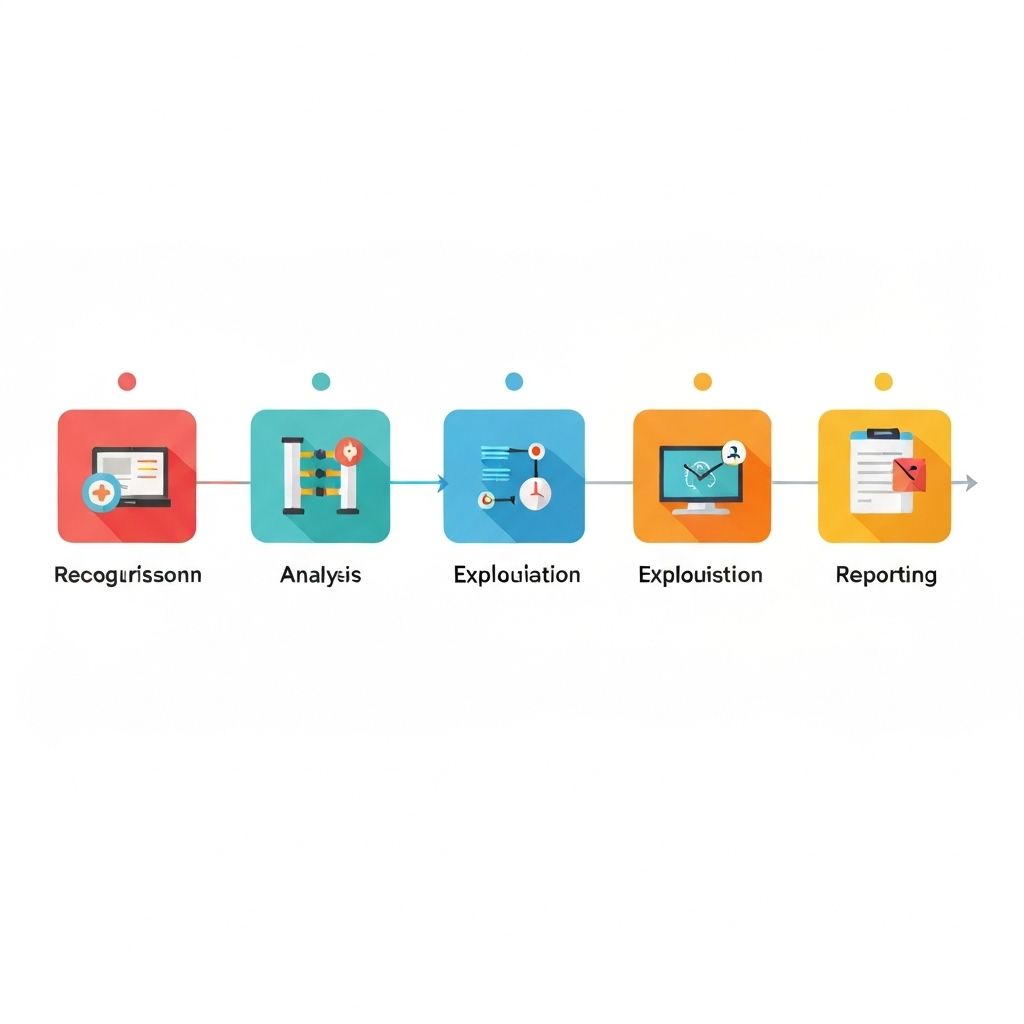
Key Techniques
- Diameter node discovery
- Interface mapping (S6a, S6d, Gx, Rx, etc.)
- Capability exchange analysis
Recommended Tools
- ToolDiameterScan
- ToolDiameter Node Mapper
- ToolEPC Scanner
Testing Best Practices
Always obtain proper authorization before testing
Use test networks or lab environments when possible
Coordinate with network operators
Document all findings with clear remediation recommendations
Diameter Pentesting Workflow
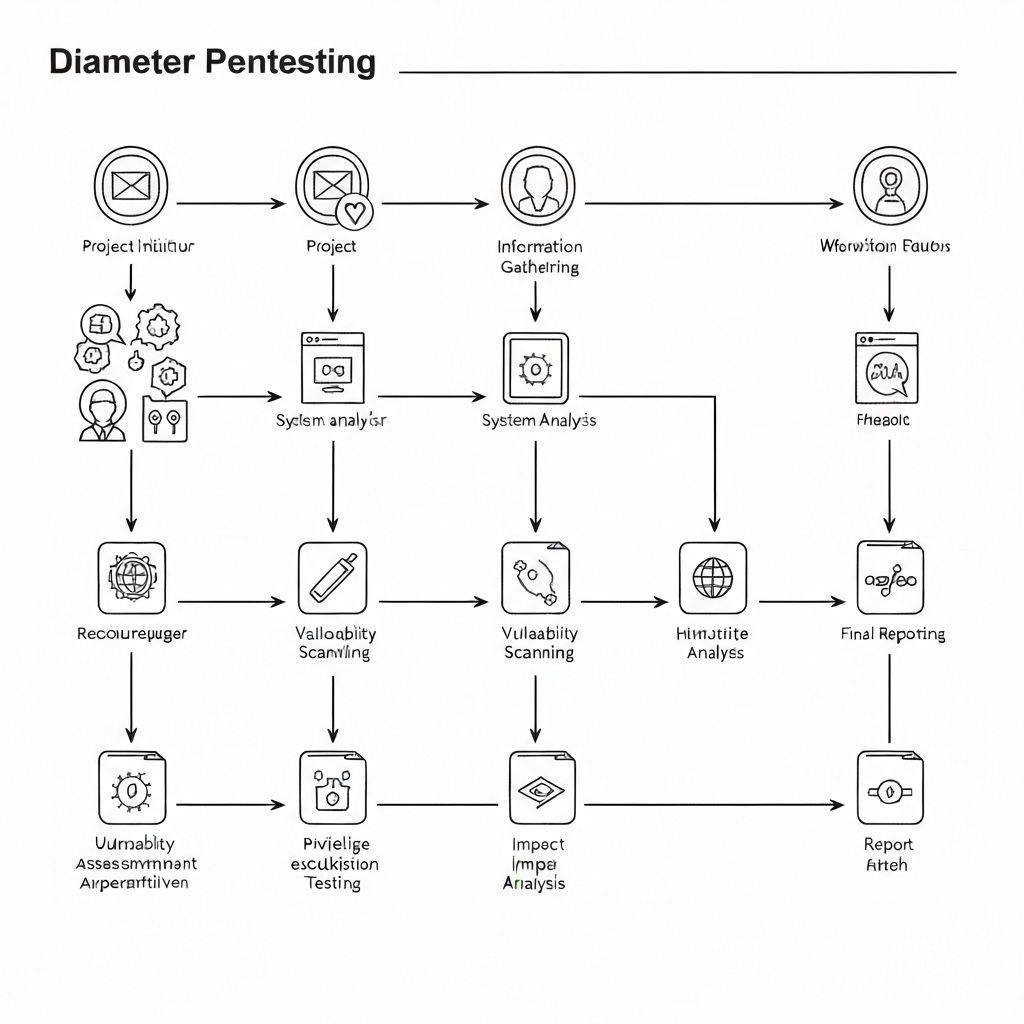
Detailed workflow for conducting Diameter security assessments
Workflow Stages
Project Initiation
- Define scope and objectives of the Diameter security assessment
- Obtain necessary authorizations and approvals
- Establish communication channels and escalation procedures
- Define success criteria and deliverables
Information Gathering
- Collect network documentation and architecture diagrams
- Identify Diameter network components and interconnections
- Map realms, hosts, and supported applications
- Document existing security controls and monitoring systems
Vulnerability Assessment
- Analyze network configuration for security weaknesses
- Identify vulnerable Diameter commands and AVPs
- Assess implementation of security controls
- Prioritize potential attack vectors based on risk
Exploitation Testing
- Develop and execute test cases for identified vulnerabilities
- Perform controlled exploitation of vulnerabilities
- Document successful attack paths and their impact
- Validate effectiveness of existing security controls
Analysis and Reporting
- Analyze test results and findings
- Assess business impact of identified vulnerabilities
- Develop detailed remediation recommendations
- Prepare comprehensive security assessment report
Tools & Resources
Effective Diameter security testing requires specialized tools and resources. The following tools are commonly used in Diameter security assessments:
Documentation & Reporting
Comprehensive documentation and reporting are critical components of the Diameter security testing methodology. Proper documentation ensures findings are clearly communicated and remediation efforts are effectively guided.
- High-level overview of the assessment
- Summary of critical findings and business impact
- Risk assessment and prioritization
- Key recommendations for stakeholders
- Detailed description of each vulnerability
- Technical impact and exploitation details
- Evidence of successful exploitation
- Affected components and services
- Specific recommendations for each finding
- Implementation guidance for security controls
- Prioritization framework for remediation
- Industry best practices and standards
- Testing methodology details
- Tools and techniques used
- Raw test data and logs
- References and additional resources
Report Templates
Executive Report
High-level summary for executive stakeholders
Technical Report
Detailed findings for security teams
Remediation Plan
Structured plan for addressing findings
Compliance & Standards
Diameter security testing should align with industry standards and regulatory requirements. The following standards and frameworks are relevant to Diameter security assessments:
- GSMA FS.19: Diameter Interconnect Security
- GSMA FS.07: Network Security Guidelines
- GSMA NESAS: Network Equipment Security Assurance
- TS 33.210: Network Domain Security (NDS)
- TS 29.229: Diameter-based Cx and Dx interfaces
- TS 33.401: Security architecture for LTE
- Signalling Security in Telecom Networks
- Security Guidance for 5G Implementation
- Threat Landscape for 5G Networks
- EU Electronic Communications Code
- FCC CSRIC Best Practices
- National telecommunications regulations
Compliance Considerations
- Data Protection: Ensure compliance with data protection regulations (e.g., GDPR)
- Critical Infrastructure: Consider requirements for critical infrastructure protection
- Telecommunications Regulations: Adhere to telecom-specific regulatory requirements
- Reporting Requirements: Be aware of mandatory reporting for security incidents